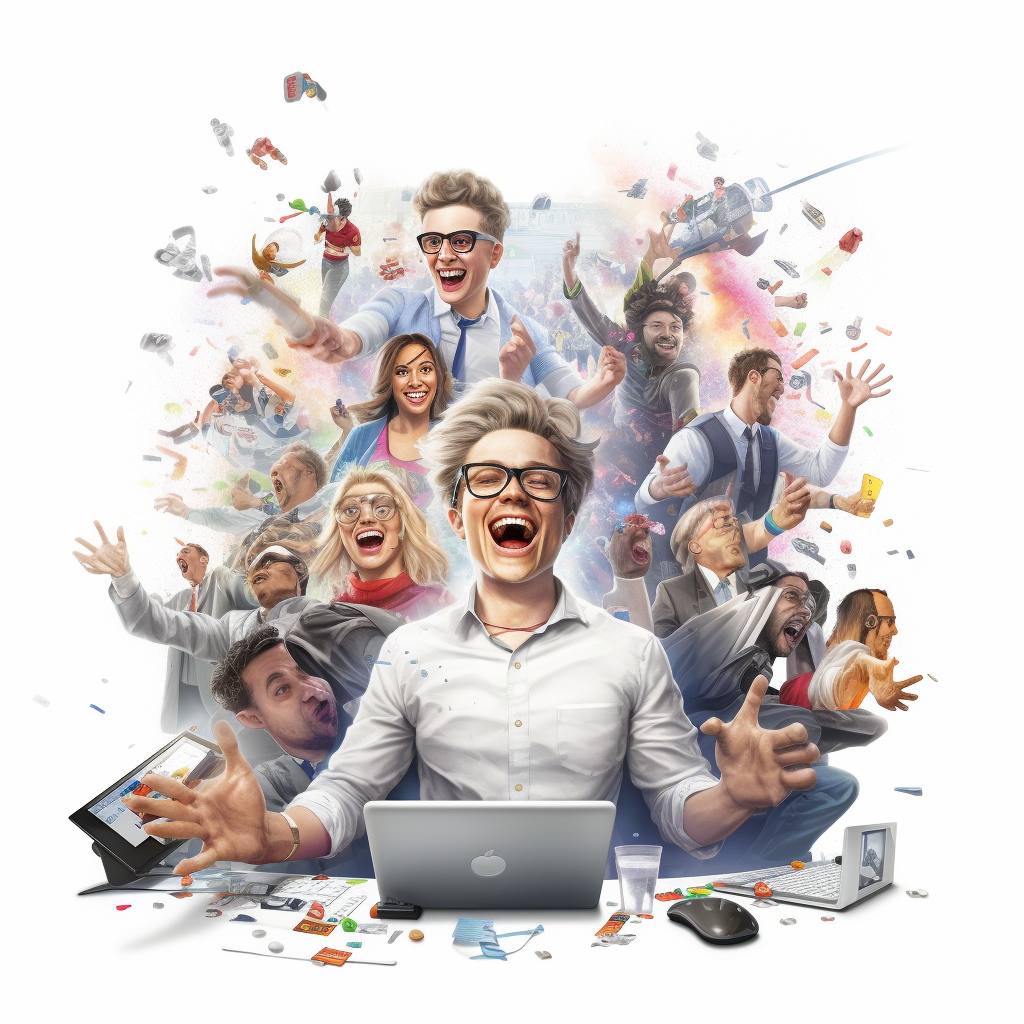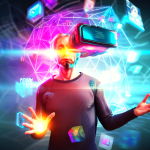Gamification to Level Up Your Workplace
Gamification has been gaining popularity in recent years as a way to make work more engaging, motivating, and fun. By applying game mechanics and rewards to tasks and processes, companies can increase employee productivity, satisfaction, and loyalty. From healthcare to education, gamification has proven to be an effective tool for motivating behavior change and achieving better outcomes. In this article, we’ll explore five inspiring examples of gamification in action in the workplace. Whether you’re a manager looking for ways to boost team morale or an employee seeking to level up your skills, these real-life case studies will give you insights and ideas to apply gamification in your own organization. So, let’s dive in and discover how gamification can help you level up your workplace!
Benefits of gamification in the workplace
Gamification (IF designed correctly) offers several benefits to the workplace. First and foremost, it makes work more engaging. By introducing applying behavioral science and a well thought of strategy with elements such as points, badges, leaderboards, and challenges, gamification can transform mundane tasks into exciting adventures. This can lead to increased motivation and productivity among employees. Gamification can also foster a sense of camaraderie and healthy competition among team members, leading to better collaboration and teamwork. Additionally, gamification can provide instant feedback and recognition to employees, which can boost their confidence and job satisfaction.
Another benefit of gamification is its ability to drive behavior change. By setting clear goals and providing incentives for achieving them, gamification can encourage employees to adopt new habits and behaviors. For example, a gamified training program can motivate employees to complete their training modules on time and retain the knowledge better. Gamification can also help to reinforce values and culture within an organization, by aligning game mechanics with the desired values and behaviors.
Overall, gamification can help to create a more positive and productive work environment, by making work more enjoyable, rewarding, and meaningful.
Top Example: CAIXA Bank
CAIXA’s venture into Gamification, supported by the Octalysis Framework, was on the verge of triggering a remarkable transformation in its trajectory. Despite its undeniable track record of success in Latin America’s banking and financial sector, CAIXA was determined to further boost its sales.
The goal was to increase profits from R$ 8.6 billion to R$ 9 billion (a 5% increase) compared to the previous year. CAIXA went from #2 bank to #1 bank within a year.
Example 2: Salesforce’s Trailhead
Salesforce’s Trailhead is a gamified online learning platform that offers interactive training modules on Salesforce products and services. Trailhead uses game mechanics such as points, badges, and leaderboards to motivate learners to complete their training and acquire new skills. Learners can earn points and badges for completing modules, quizzes, and challenges, and compete with their peers on leaderboards. They can also showcase their accomplishments on social media and LinkedIn.
Trailhead has been a huge success for Salesforce, with over 2 million learners earning more than 20 million badges to date. The gamified platform has helped to increase employee engagement, skill development, and retention. It has also helped to build a community of learners and advocates for Salesforce products and services.
Example 3: Deloitte’s Leadership Academy
Deloitte’s Leadership Academy is a gamified leadership development program that offers virtual simulations, assessments, and coaching to its participants. The program uses game mechanics such as points, badges, and levels to motivate participants to complete their leadership challenges and improve their skills. Participants can earn points and badges for completing simulations, assessments, and peer feedback, and progress through different levels of mastery.
The Leadership Academy has been a game-changer for Deloitte, with over 100,000 participants from more than 160 countries. The gamified program has helped to increase leadership skills, collaboration, and innovation among its participants. It has also helped to identify high-potential leaders and provide them with personalized coaching and development.
Example 4: McDonald’s Till Training Game
McDonald’s Till Training Game is a gamified training program that simulates the experience of taking orders and processing payments at a McDonald’s restaurant. The program uses game mechanics such as points, badges, and levels to motivate learners to complete their training and improve their performance. Learners can earn points and badges for completing different levels of the game, and compete with their peers on leaderboards.
The Till Training Game has been a hit with McDonald’s employees, with over 50,000 downloads in the first month of its release. The gamified program has helped to increase employee engagement, retention, and customer satisfaction. It has also helped to reduce training time and costs, by providing an immersive and interactive learning experience.
Example 5: Microsoft’s Ribbon Hero
Microsoft’s Ribbon Hero is a gamified training program that teaches users how to use Microsoft Office applications. The program uses game mechanics such as points, badges, and challenges to motivate users to explore the features and functions of the applications. Users can earn points and badges for completing challenges, and progress through different levels of mastery.
Ribbon Hero has been a popular tool for learning Microsoft Office, with over 1 million downloads to date. The gamified program has helped to increase user engagement, familiarity, and productivity with the applications. It has also helped to provide a fun and interactive way of learning, which can be more effective than traditional training methods.
Example 6: Google’s Code-In Competition
Google’s Code-In is a gamified competition that invites pre-university students aged 13 to 17 to work on open-source software projects. The competition uses game mechanics such as points, badges, and leaderboards to motivate students to contribute to the projects and improve their coding skills. Students can earn points and badges for completing tasks, and compete with their peers on leaderboards.
Code-In has been a successful initiative for Google, with over 10,000 students from more than 100 countries participating since its inception. The gamified competition has helped to increase student engagement, collaboration, and innovation in open-source software development. It has also helped to identify and nurture young talent in the field of computer science.
How to implement gamification in your workplace
Implementing gamification in your workplace requires careful planning and execution. Here are some tips to get you started:
1. Define your goals: Identify the specific behaviors or outcomes you want to encourage through gamification. Set clear goals and metrics to measure success.
2. Choose the right game mechanics: Select the game mechanics that are most appropriate for your goals and audience. Consider factors such as motivation, engagement, and competition.
3. Design the user experience: Create a user experience that is fun, intuitive, and rewarding. Make sure the game mechanics are easy to understand and use.
4. Provide feedback and recognition: Offer timely and meaningful feedback and recognition to users. Use badges, points, and leaderboards to acknowledge their achievements and progress.
5. Test and iterate: Test your gamification program with a small group of users first, and gather feedback to improve the program. Iterate and refine the program based on user feedback and data.
By following these tips, you can create a gamification program that is effective, engaging, and impactful.
Tips for successful gamification in the workplace
Here are some additional tips to ensure the success of your gamification program:
1. Align with company values: Ensure that your gamification program aligns with the values and culture of your organization. Use game mechanics that reinforce the desired behaviors and attitudes.
2. Offer meaningful rewards: Provide rewards that are meaningful and relevant to users. Consider non-monetary rewards such as badges, recognition, and opportunities for growth.
3. Foster collaboration: Use game mechanics that encourage collaboration and teamwork among users. Create challenges and leaderboards that require users to work together and share knowledge.
4. Foster healthy competition: Use game mechanics that promote healthy competition among users. Avoid creating a cut-throat environment that may discourage participation.
5. Measure and analyze data: Collect data on user behavior and performance, and use the data to improve the program. Use analytics tools to track user engagement, retention, and performance.
By following these tips, you can create a gamification program that is not only fun and engaging, but also effective and impactful.
Challenges and solutions in gamifying the workplace
Gamifying the workplace is not without its challenges. Here are some common challenges and solutions to consider:
1. Resistance to change: Some employees may resist the introduction of gamification, viewing it as a distraction or gimmick. To overcome this, communicate the benefits of gamification and involve employees in the design and implementation process.
2. Overemphasis on rewards: Overemphasizing rewards can lead to a focus on short-term gains rather than long-term behavior change. To avoid this, balance rewards with feedback and recognition, and ensure that the rewards are aligned with the desired behaviors and outcomes.
3. Lack of engagement: If users are not engaged with the program, it may fail to achieve its goals. To increase engagement, create a user experience that is fun, intuitive, and rewarding. Use game mechanics that are relevant and appropriate for the audience.
4. Limited resources: Gamification can be resource-intensive, requiring time, money, and expertise. To address this, start small and test the program with a small group of users first. Use off-the-shelf gamification platforms or tools to reduce costs and complexity.
5. Data privacy and security: Gamification programs may collect and store sensitive data about users, such as performance metrics and personal information. To ensure data privacy and security, follow best practices in data collection, storage, and usage. Inform users about how their data will be used and protected.
By addressing these challenges, you can create a gamification program that is effective, engaging, and sustainable.
Conclusion
Gamification is a powerful tool that can transform the way we work. By applying game mechanics and rewards to tasks and processes, companies can increase employee productivity, satisfaction, and loyalty. In this article, we explored five inspiring examples of gamification in action in the workplace, with likely the best case study being the Caixa bank one created with Octalysis.
We also provided tips and solutions for implementing gamification in your own workplace, and addressed common challenges that may arise. By following these insights and ideas, you can level up your workplace and create a more positive and productive work environment.
A Word of Caution
Starting a Gamification project can be daunting. It involves significant investment in terms of time, money, and human resources. Make sure you increase your chances of getting it right from the start. We can help you save cost, risk and disappointment.
Contact us with any queries you have and we will get back to you swiftly.






